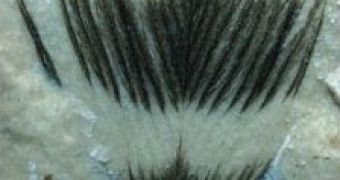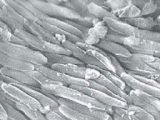The long debate over a complexly colored fossilized feather belonging to a species of bird that flew in the Earth's skies some 100 million years ago has been settled recently by scientists after they revealed that the coloring patterns were of biological origin, and might contain clues to some of the hues displayed by ancient birds and particular species of dinosaurs.
"It solves a conundrum. The banding looks so life-like that it can't be geological in origin - it has to be biological. But then how do you square that with the well-known fact that the majority of organic molecules decay in thousands of years?" says Dr Mike Benton of the University of Bristol, regarding the new discovery made by researchers from Yale University.
The fossils in question came from Brazil and Denmark and have been analyzed and compared with some of the features of modern day birds. The results showed that dark bands in the fossil feathers have a very distinctive texture, made of densely-packed flattened microscopic spheres which were previously thought to be fossilized bacteria. However, when compared to the feathers of modern birds researchers realized that both had closely resembling structures.
"There are particular cells that cluster into the dark areas of modern birds called melanosomes. Somehow the melanosomes are retained and replaced during the preservation process and hence you preserve a very life like representation of the colour banding in the fossils," said Dr Benton.
By contrast, lighter colored areas of the fossil appeared to have totally different textures, suggesting that the feather would have had a black and white stripe pattern. Additionally, the texture of colored patterns of modern birds also suggests that the ancient bird the feather belonged to might have had a much more complex plumage than previously thought, containing colors such as brown, red, buff and several iridescent shades.
The discovery further implies that the technique used to solve this long standing mystery may also be applied in the future to conduct investigations regarding the coloring of fur and eyes, as well as the life style of extinct creatures.
"It allows you in certain cases to combine this knowledge with other information to paint quite a remarkable picture of behavior. It might give you a very clear handle on an aspect of the ecology that people would have thought impossible to divine for an ancient fossil," said Professor Benton.
Until now, researchers mostly applied genetic techniques in order to reveal similar characteristics. The method applies relatively well in the case of samples containing well-preserved genetic material, although it becomes useless in the case of old species where genetic material is scarce.

 14 DAY TRIAL //
14 DAY TRIAL // 
